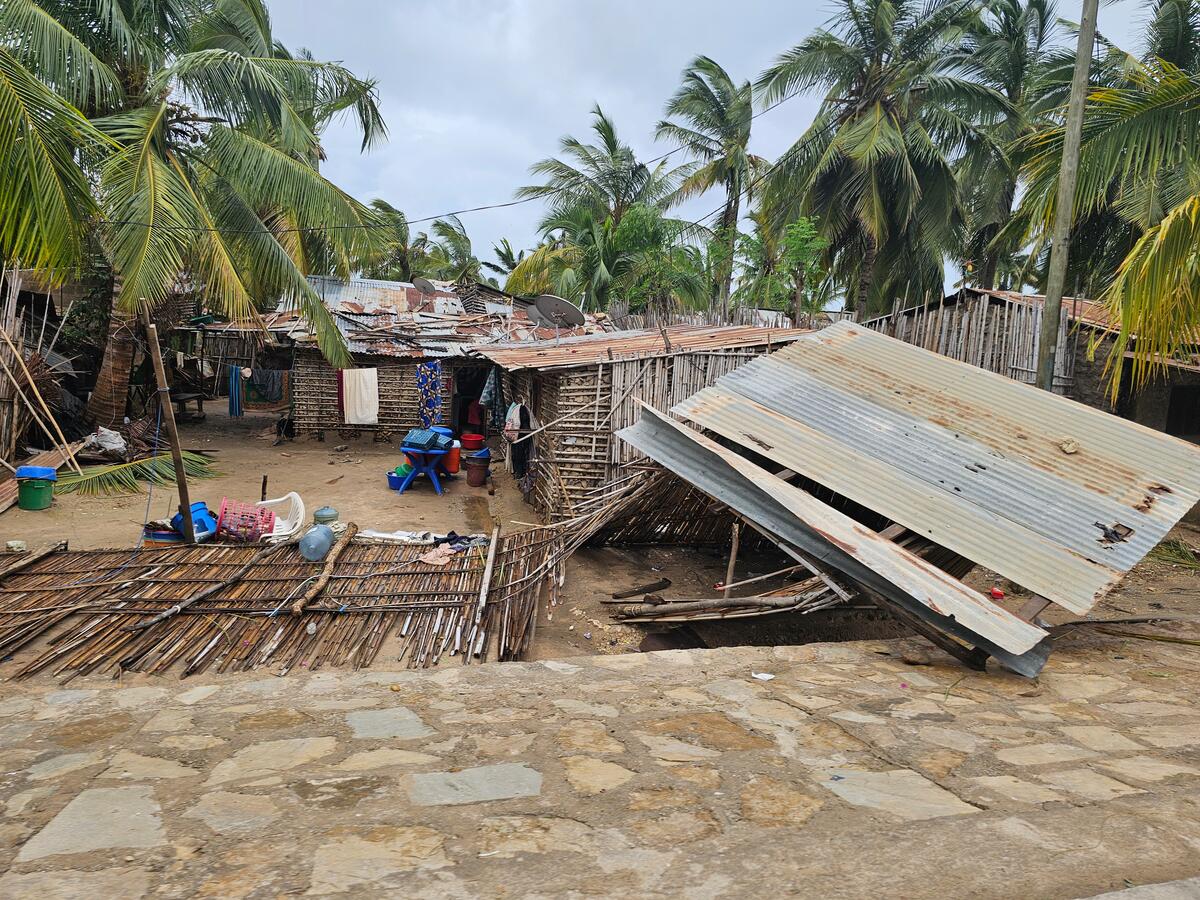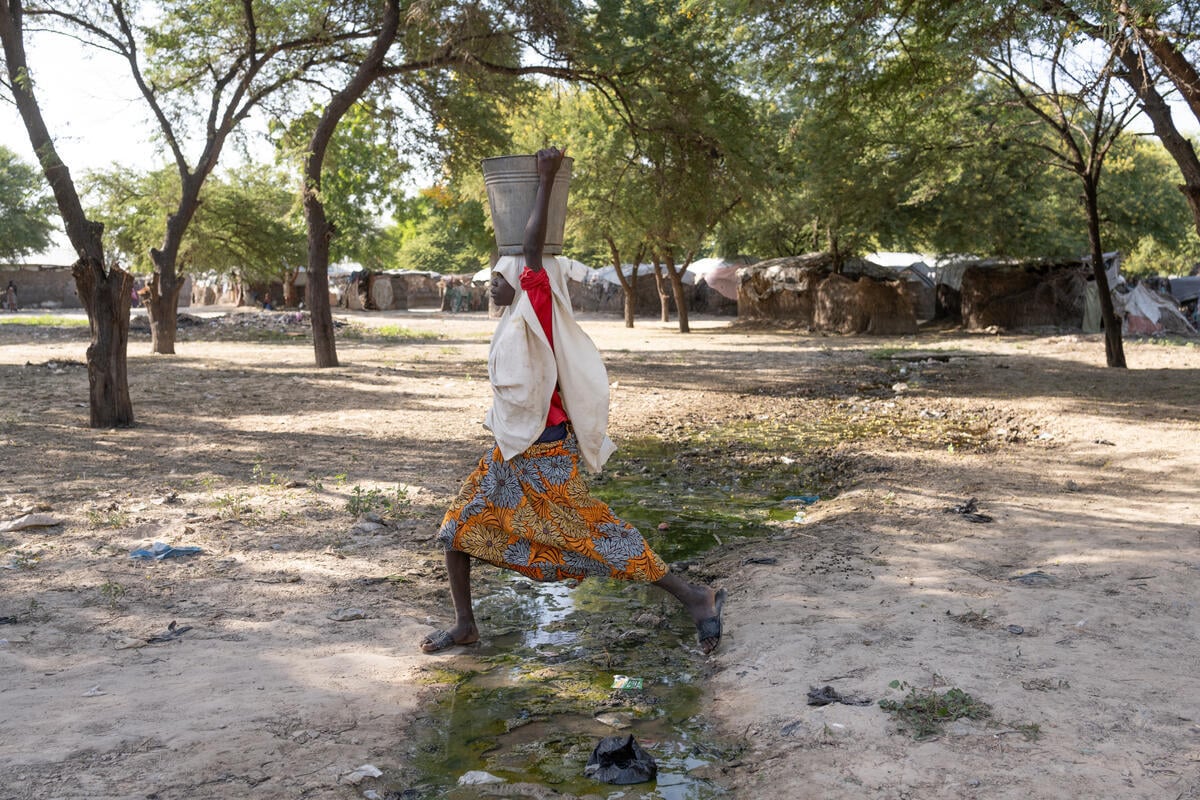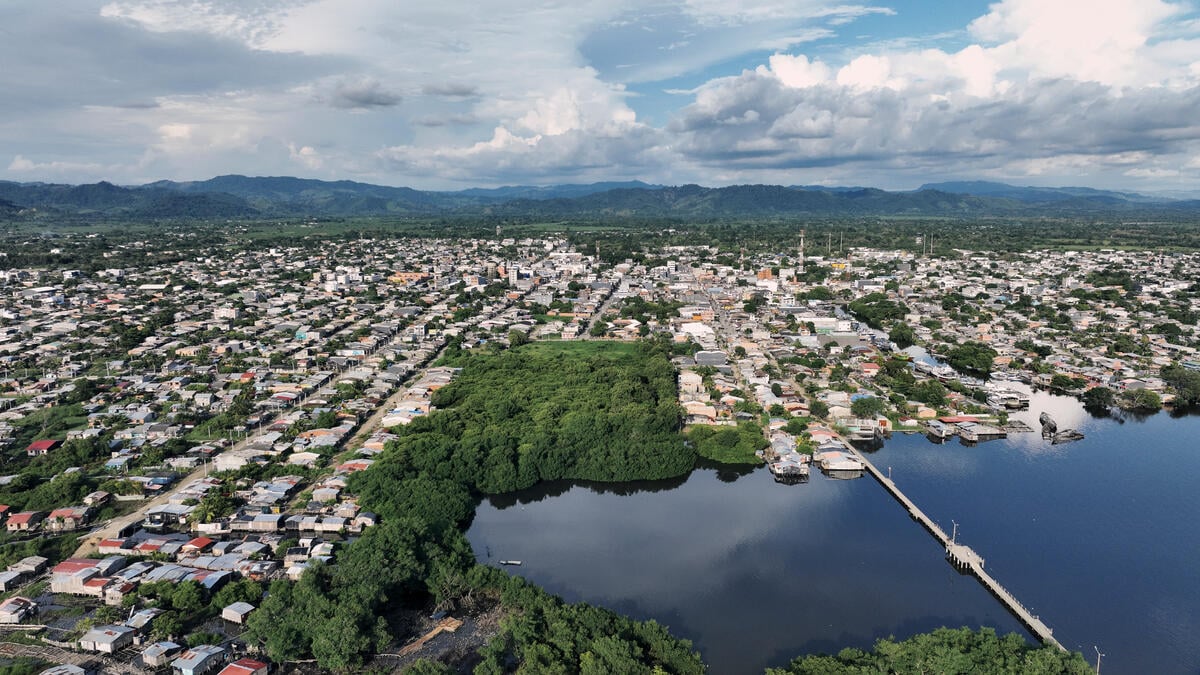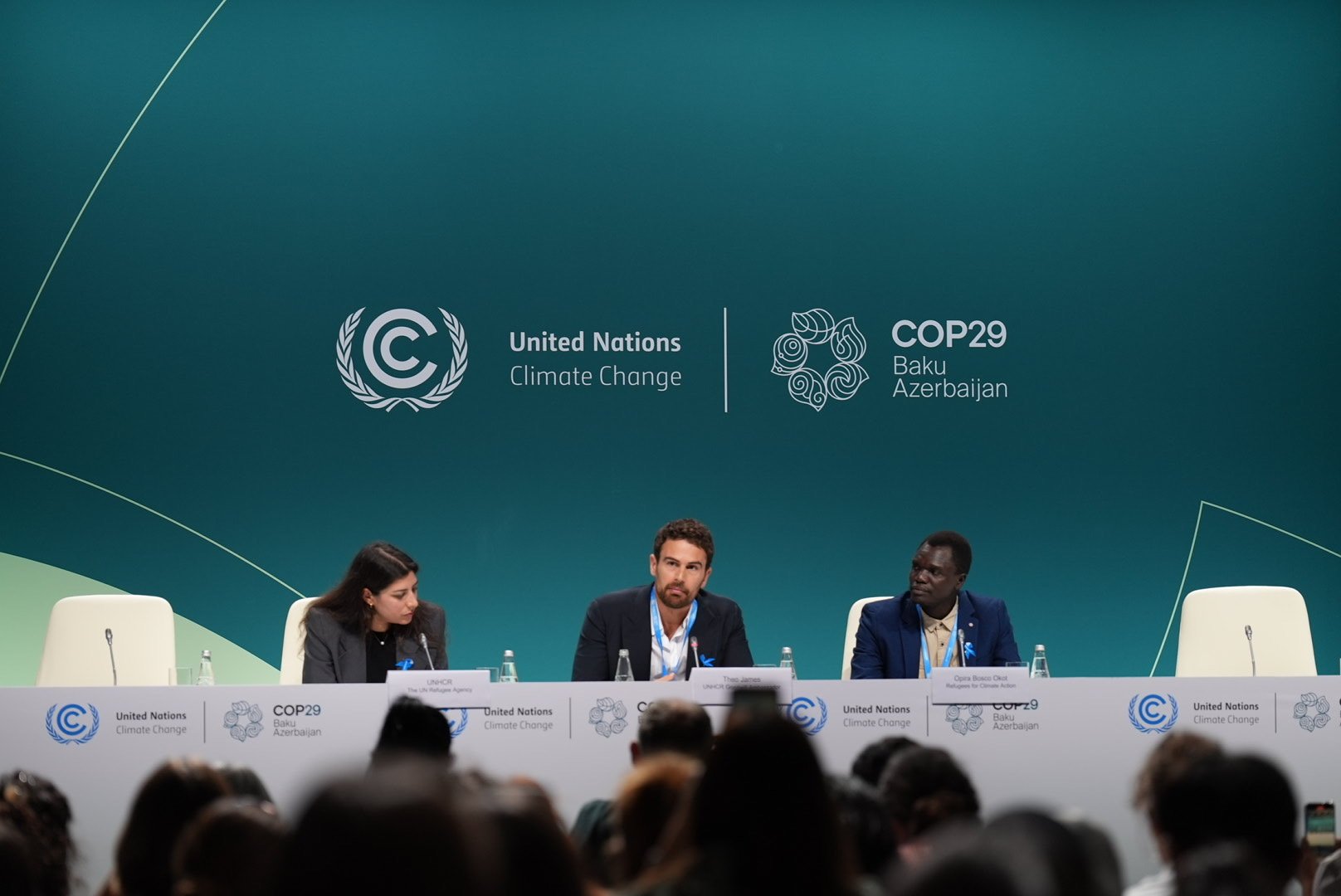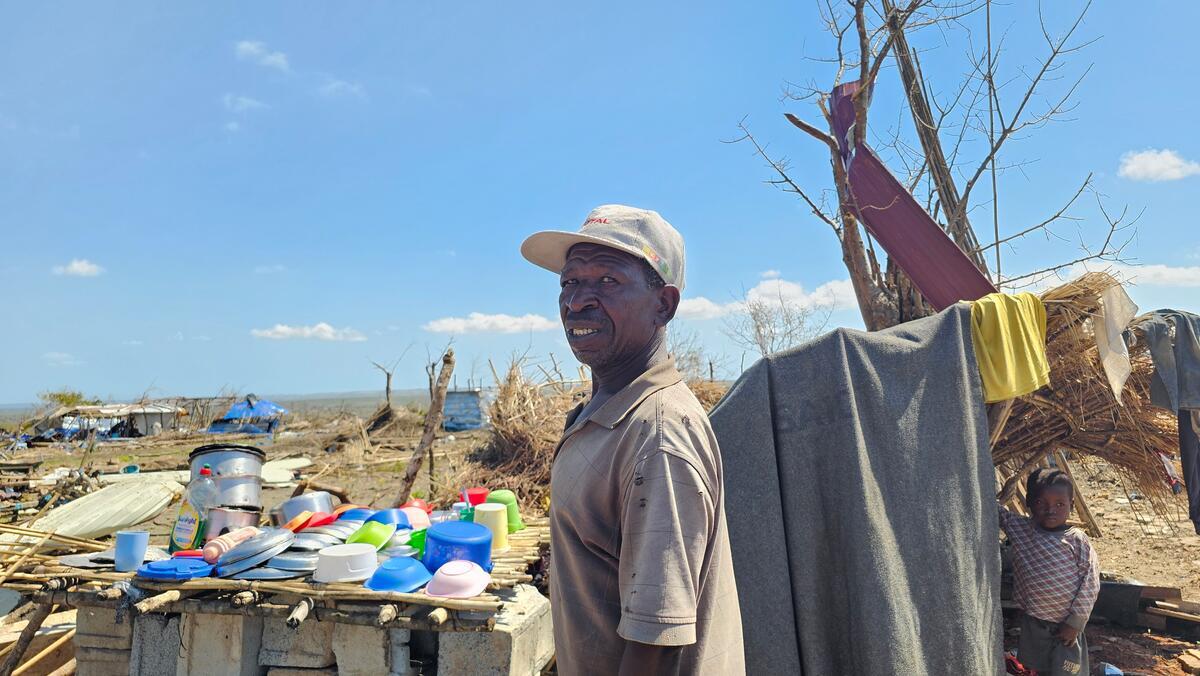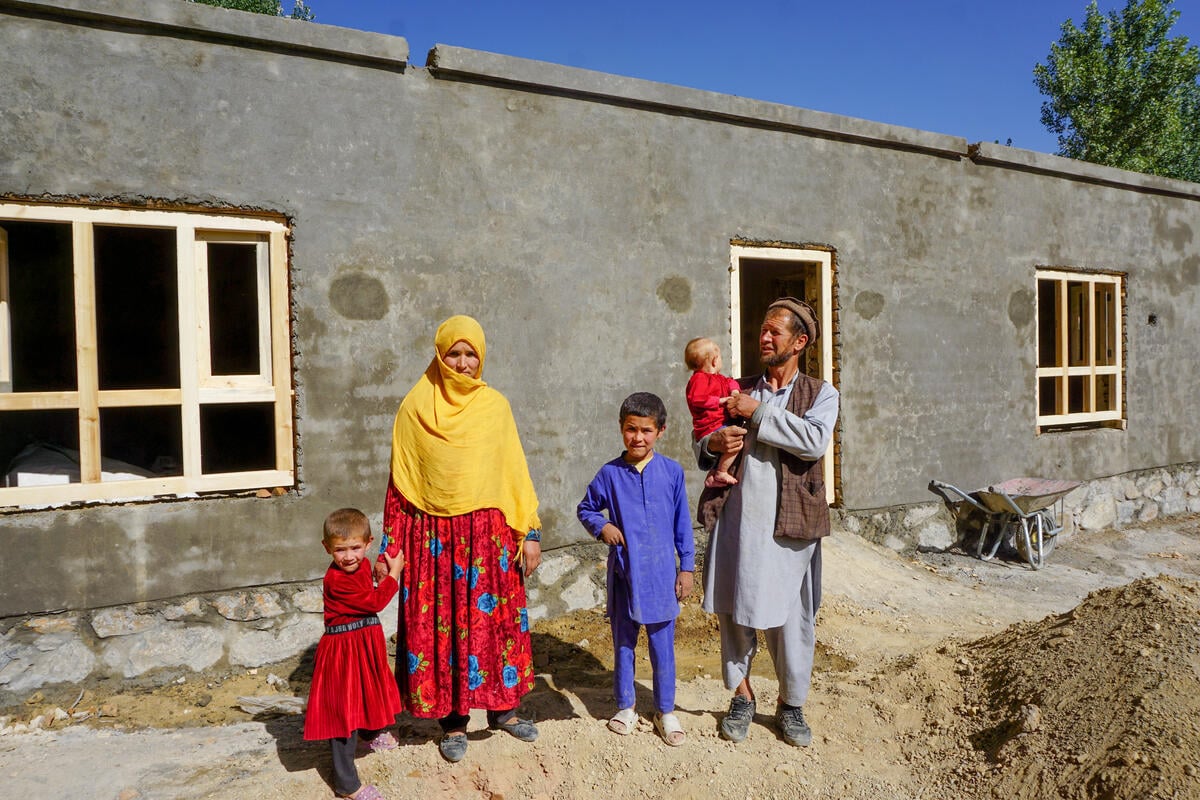Climate activist fights pollution in the world’s largest refugee camp
Climate activist fights pollution in the world’s largest refugee camp

Mohammed Anower, 18, helped clean up the fetid, garbage-filled stream that runs past his family home in Kutupalong camp.
Makeshift homes and unplanned dump sites disgorged rubbish into it, and when the monsoon rains fell, the stream was quickly clogged with plastic and burst its banks.
“The first thing we saw when we came out of our shelters was the filth in the stream. We could not even breathe clean air because of the smell,” said the 18-year-old activist.
Today, thanks to the efforts of Anower and his friends, the stream is dredged of waste and its banks fortified with grasses and reeds. The land alongside the stream has been cleared of structures and cleaned of rubbish; new saplings of native burlflower and Bengal almond line the waterway, and solar streetlights have helped turn a treacherous no man’s land into a thoroughfare connecting neighbourhoods.
Living on the frontlines of the climate crisis
Anower is among a growing number of refugees and internally displaced people living in climate “hotspots” around the world, who are working to build resilience in their communities and are speaking with one voice on the need for climate action.
“It’s essential for refugees to come together on climate issues,” he said. “We all have to work collectively to mitigate the impact of climate change.”
“What does it mean to be a climate activist fighting pollution in the world’s largest refugee camp? Find out from Anower, a Rohingya refugee in Bangladesh! (link is external)#COP28 (link is external)pic.twitter.com/ib7FkANrIK”
— UNHCR, the UN Refugee Agency (@Refugees) November 23, 2023Link is external
Anower was just 12 years old when he arrived in Bangladesh alongside hundreds of thousands of other stateless Rohingya fleeing violence in Myanmar’s Rakhine State in 2017. The sudden influx created the world’s largest refugee camp, as land was cleared to make way for over 700,000 people. Some 24 square kilometres of forest was turned into a crowded, hot, and barren moonscape in an area of Bangladesh that was already vulnerable to increasingly frequent and intense tropical storms and flooding.
The refugee camp was the polar opposite of the world Anower had known in rural Rakhine. “We lived next to a stream on the plains, surrounded by forest and rice paddies. The stream was clean, we would swim in it and play in the water. The temperature was cool, there were a lot of trees – mango and jackfruit – it was so good, so beautiful,” he said.
The fetid channel that ran by the shelter that he shared with his parents and eight siblings was a constant reminder of what he had lost.
Seizing the initiative
In 2020, Anower heard about an initiative, spearheaded by UNHCR and its partner organization the International Union for Conservation of Nature (IUCN), to establish Youth Environment Teams in each of the 33 congested camps in Cox’s Bazar. Each team, made up of five young women and five young men, was taught about pollution, climate change and how to analyze root causes and design projects to address them.
“Before, I enjoyed nature, but I had no idea about how to take care of the environment,” said Anower.
Roksana Asma, IUCN’s senior programme assistant, said Anower immediately stood out: “He was so enthusiastic. When we talked about something, he immediately got it, and he has that quality of being able to express it to other people, like a teacher.”
He has since proven to be an enthusiastic and eloquent advocate for climate justice, taking the lead role in a play performed in the camp to mark World Environment Day, and helping in the formation and training of other youth groups.

Volunteers pull trash out of a stream in Kutupalong refugee settlement as part of an environmental initiative spearheaded by Mohammed Anower and his youth group.
In their section of the camp, Anower and his colleagues had little doubt about which environmental problem they would focus on first: the stream. With a small grant of $200, they widened the stream, increasing fivefold its capacity to handle flood water. They also removed some 5,000 cubic feet of waste and planted 50 trees along its banks. The results are a cleaner and healthier environment, reduced flooding and landslides, and more public space.
A few hundred metres further down, the stream flows past a recreation ground where kids play football, before joining a tributary of the Naf River that forms the border between Bangladesh and Myanmar. Here, Anower and his friends have planted another avenue of trees – bamboo, burlfower, and bedda nut – that will provide shade in a few years’ time.
With very few opportunities to work or study in the camp, Anower is seizing the initiative, and taking control where he can: “We cannot leave this place, but the environment is very dirty, so we have to change it.”
Anower is making the best of a bad situation, investing in a future that he has not chosen. Until he is able to return to Myanmar, he is working to make the camp more closely resemble the home he was forced to flee. And as world leaders gather in Dubai for COP28, the UN climate change conference, Anower has ambitions that are bigger than his immediate environment.
“I want to show world leaders at COP28 the climate change we are facing in the camp, with landslides and flooding. I want to pass the news to them so that things can change,” he said. “I believe they will listen to my voice.”


